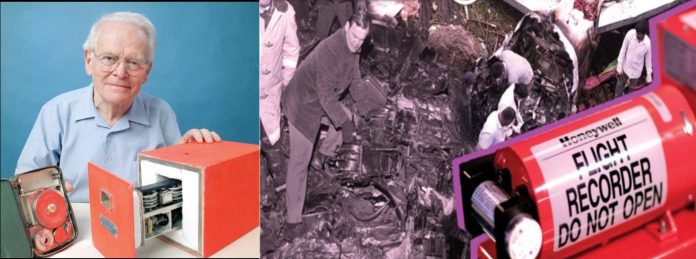– M Rafi Ahmed
Not unusual to hear about the Black Box during devastating disasters of flight crash across the globe. And the Black Box is considered a vital component in flights since it reveals the reason for the air crash. Dreams of 241 passengers on a Boeing 787 Dreamliner aircraft were shattered when it crashed near Meghanin Nagar area in Ahmedabad soon after its take-off on Thursday afternoon.
It is learnt that the Directorate General of Civil Aviation (DGCA) team recovered one Black Box from the tail of the plane at the crash site outside the Sardar Vallabhbhai Patel International Airport. Experiences show that hardly any report about the findings from the Black Box is made public. More often than not, the powers-that-be orders for a detailed enquiry into the mishap only to see the report gather dust at the DGCA office.
In this backdrop, it is interesting to infer the story behind Black Box which was nicknamed while actually it is orange in colour. The Black Box, ironically enough, is an orange-coloured object consisting of two parts: the Cockpit Voice Recorder (CVR) and the Flight Data Recorder (FDR). The CVR records radio communications, captain and crew member conversations, and noises such as engine sounds or stall alarms, allowing experts to study important audio signals. The FDR tracks a minimum of 88 variables, such as altitude, airspeed, and direction of travel, with contemporary aircraft monitoring as many as 1,000 features, like flap lever positions or smoke detector activation, reports the National Transportation Safety Board (NTSB). Initially developed in 1953 by Australian scientist David Warren, whose inspiration was his father’s death in a 1934 plane crash and the 1953 Comet crash, the Black Box has become an essential instrument for aviation safety.
Painted orange for visibility, they are constructed from titanium or stainless steel to survive high-impact crashes, fires, and 14,000-foot deep-sea pressure. The FDR is usually installed in the aircraft tail, and the CVR in the cockpit. On helicopters, a single combined recorder monitors 800-1,200 parameters, according to Airbus. In 1954, Dr David Warren was working as a research scientist at the Aeronautical Research Laboratory (ARL) in Melbourne when he was involved in an investigation into the mysterious repeated crashes of the world’s first jet-powered commercial aircraft, the Comet.
Soon after his invention, the first modern “Black Box” flight recorder was test-flown in Melbourne on 23 March 1962. By 1965, cockpit voice recorders were mandatory in all commercial flights; first in the US and then the rest of the world. The first black boxes were acknowledged as an Australian invention but, sadly, that acknowledgement was quickly erased. As for Dr Warren, he worked at the ARL as its principal research scientist until his retirement in 1983.
It wasn’t until 2002 that Dr Warren’s work was officially recognised when he was made an Officer of the Order of Australia (AO) for his service to the aviation industry. And, quite incredibly, Dr Warren never received any royalties from his incredible invention. A flight data recorder (FDR) is an electronic device installed on aircraft to record information about each flight.
It is a vital tool for accident investigations, helping experts reconstruct the events leading up to a crash. Modern FDRs record dozens of parameters, including airspeed, altitude, engine performance, control positions, and more. This data provides invaluable insights into what went wrong in an accident. FDRs are usually armored in a crash-survivable memory unit so that data can still be retrieved even after a severe impact. They are combined with a cockpit voice recorder (CVR), which records radio transmissions and sounds in the cockpit. Together, the FDR and CVR provide a comprehensive account of the flight’s final moments.
“Black Box” is also an engineering term referring to a device viewed solely in terms of its input and output. The complex inner workings are disregarded, or “black boxed.” FDRs record data inputs on the flight and preserve them for output after a crash. While the FDR unit was painted orange, the accompanying CVR was often shielded in black casing.
The “Black Box” term may have been originally used for the CVR and then became associated with both recording devices. In a crash, the aircraft is often charred black and destroyed. As the only intact object at the accident site, the bright orange FDR contrasts against this blackened backdrop. Its status as an information-bearing remnant may have inspired the “Black Box” moniker.
Warren after a glorious service between 1953 and 1983 passed away on July 19, 2010 at the age of 85. He was buried in a casket bearing the label “Flight Recorder Inventor; Do Not Open” in Melbourne. No doubt, David Warren, the man who invented the ‘Black Box’ and changed aviation will be remembered forever.
[The author is former Indian Express and Deccan Chronicle chief]




